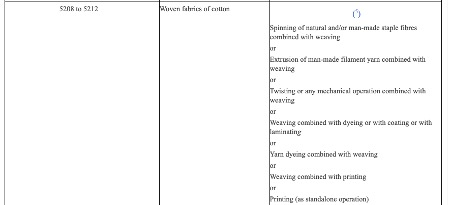Revised rules of origin of the PEM Convention: maximum content of non-originating materials
August 23, 2021Are you using EXW Incoterm at export?
October 4, 2021Full cumulation means that all operations carried out in the partner countries where full cumulation applies are taken into account when assessing the origin of the final product.
The pan-Euro-Mediterranean (PEM) transitional rules of origin provide for full cumulation for all products except textiles and clothing listed in Chapters 50-63 of the HS.
However, for products of Chapters 50-63, the transitional rules provide for bilateral full cumulation for the parties who choose to apply it. In this case, the Republic of Moldova and the participants of the EU Stabilisation and Association Process applying the transitional rules are considered as a single contracting party.
Let’s use the example taken by DG TAXUD in the Guidance Transitional PEM rules of origin to explain full bilateral cumulation.
• An EU company is importing Bangladesh originating yarn into the EU.
• The yarn is classified under HS 5204.
• In the EU, weaving operation is done and the product shall be classified under HS 5208 at export.
• The woven fabric (HS 5208) is exported to Switzerland where it is treated for colour, dyed and cut. Then, the made-up fabric is manufactured together with the lining materials originating in the EU into baby clothes.
• Baby clothes are classified under HS ex6209 at export from Switzerland.
• Baby clothes are imported in the EU.
The first transaction is between Bangladesh and EU. The EU company is importing yarn into the EU where weaving operation is done (HS 5208). As we know that we are going to export the processed product to Switzerland, we need to check if the rule of origin for HS 5208 is met to be able to get preferential treatment at import in Switzerland. The rule of origin for HS 5208 is the following (PEM transitional rules of origin):

As we can see, the weaving alone does not qualify for EU preferential origin. Due to this, the EU company can export the goods to Switzerland, without the EU preferential origin, but with the suppliers’ declaration.
In Switzerland, the customs duties will be paid at import. The Swiss company will treat the woven fabric for colour, dyed and cut and will the made-up fabric is manufactured together with the lining materials imported from the EU. The final product produced in Switzerland is baby clothes classified under HS ex6209. As the baby clothes are going to be exported to the EU, we need to check if the product can qualify for Swiss preferential origin.
We need to check the rule of origin, under the PEM transitional rules of origin, for HS ex6209:

In Switzerland the baby clothes obtain preferential origin because the working carried out in the EU (weaving) will be added to the working carried out in Switzerland. The Swiss company can declare the preferential Swiss origin and the importer in the EU will not pay the customs duties.
With our long experience with origin of goods, Customs Easy can support you with preferential and non-preferential rules of origin.
Do you want to know more about origin rules? You can contact our Team at info@customseasy.com.
